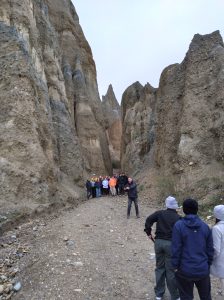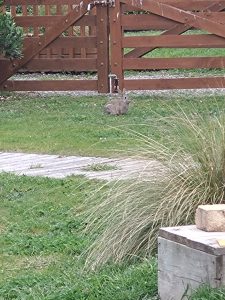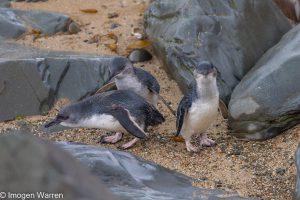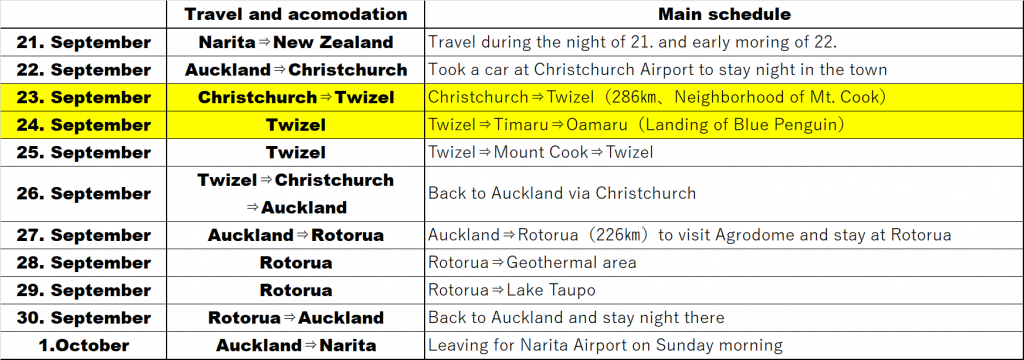ニュージーランドを初訪問、南北両島を車で無理やり巡る弾丸ツアー②「ペンギンが上陸!」/The first visit to New Zealand, Bullet tour to drive both of North and South Islands②“Penguins go back home!”

(今回の旅程は黄色部分になります)
From Christchurch to Twizel via Lake Tekapo
The morning of September 23rd (Saturday) had arrived. Today, the plan was to depart from Christchurch and head to the town of Twizel at the foothills of Mount Cook. Although, if the schedule allowed, I would have liked to enjoy kayaking and punting along the tranquil waterways in the city and parks of Christchurch. However, due to a tight itinerary, I decided to visit only the Christchurch Cathedral, reconstructed with paper blicks after its collapse in the 2011 earthquake. After observing the cathedral, I set off for Twizel, approximately 290 km away.
(English text continues on the latter half of the page)
ChristchurchからTekapo湖を経てTwizelへ
9/23(土)の朝が来た。今日はChristchurchを発ってMount Cook麓のTwizelという町に移動する予定。日程が詰まっていなければ、穏やかで静かなChristchurchの街並みや公園の水路でカヤックやパンティングを楽しみたいところなんだけど、今回は2011年の大地震で倒壊した後で紙素材によって再建されたクライストチャーチ大聖堂だけを観てから、約290㎞彼方のTwizelに向けて出発することに。
クライストチャーチ大聖堂はもともと市のランドマークにもなっていた石造りの聖公会の教会だ(下の写真が在りし日の姿)。

だが2011年2月にM6.2のカンタベリー大地震によって尖塔部分が崩壊、正面ステンドグラスや西側壁も大部分が崩れ落ち、そのまま再建に向かうのは危険すぎるということで、すぐ近くに建設されたのが日本人建築家のアイデアによって建てられた“紙の教会だ。




屋根の素材などを見てもわかるように、建材はすべて樹脂をコーティングした段ボールで、下の写真の説教台や控室ではむしろ段ボールがとてもユニークな味を出している。入場は無料で、寸志を置いていける募金箱も紙でできている(寸志は現金のほかクレジットカード払いも有効)。




この教会堂はあくまで仮の会堂で、当初は少なくとも10年間の使用を見込んでおり、今年はすでにその10年目だが、“紙でできた教会”は今では世界的に有名な観光資源となっているようだ。チャペルの中で説明をしてくれた現地の人と話していても、この建築物はすでにコミュニティの中に受け入れられているようだった。
ちなみにクライストチャーチのショッピングモール「Westfield」には、ニュージーランド最大と言う日本食マーケット「Japan Mart」がある。ここで非常食のカップ麺を購入。


さてここからTwizelまで半日のドライブ、市街を出ると国道はそのままハイウエイになり制限速度は100㎞に上昇。しかし片道1車線、交互通行、しかも山の中のこんな道まで100㎞というのは日本人ドライバーにとってはけっこうなスリル。
ちょうど昼時に通りがかったGeraldineの街で「Izakaya」というフラッグを発見!ついつい好奇心から立ち寄ってしまったものの、昼はローカルな軽食のみ、しかもこれがあまり美味しくない・・・。この旅行では全般に食事に恵まれたものの、ここだけはいただけなかった。

南半球のニュージーランドは季節が日本の真逆で、9月下旬の現在は日本では3月にあたる季節か。それだけに満開の桜を見られるところが多かった。下の写真はGeraldineの幼稚園、ピンクに咲き誇るのは日本の八重桜に類する種類だろうか。


同じくGeraldineの花屋さんの前で見つけたやたらに人懐こいゴールデンレトリーバー。よく見たら街角に貼ってある地方議会立候補者ポスターのモデル犬だった。


再びドライブを続け、Twizelの隣り町のLake Tekapoまで到着。美しいテカポ湖を中心としたこの町は世界初の星空世界遺産、湖畔には天文台が座しており、空気の澄み渡る冬季には世界一と言われる星空を眺めるために世界中から観光客が集まる。自分たちが訪れた日は、前日の降雪からずっと霧雨が続いたままでとても星空は望めなかったのが残念。下の写真のようにほぼ地上まで雲がかかり、遠くの山も麓がわずかに見えるばかり。2枚目の写真は開拓時代に人々のバディとなり生活を支えたバウンダリードッグ(牧羊犬)を称える銅像、同じく3枚目は1935年に建てられた「善き羊飼いのための教会」、石造りのチャペルはテカポ湖を代表する景観。周りの草むらの中を野生のウサギが飛び跳ねている。




テカポ湖を出てTwizelに到着したのは15:00過ぎ、あらかじめAirbnbで予約してあったFohen Cottageと言う中心部から1㎞ほどの1棟貸しの物件。これが思いのほかお洒落で快適な宿だった!写真のようにホストの自宅敷地の一部に完全に独立して建てられた2寝室のキャビン。きわめて清潔でアメニティも充実、女性の目線で室内をケアしていることが伝わってくる。しかも外飼いの猫Oakleyちゃんが人懐こいことこの上ない。キッチンに洗濯機、電気毛布まで全部ついていて、さらに猫も付いたこの宿で2人で17,500円/泊はかなり安い。お勧めの宿!
Oakley, Cat at Twizel, NZ – YouTube






宿の大家さんは50代と思しき夫婦で、宿と同じ敷地内にオフィスを構えている。旦那さんは建築業で、このロッジも自分で建て上げたそうだ。彼らに周囲の天候を聞いてみると、普段は街中に雪が降ることはないのに、前日まで雪が降っておりマウントクックまでの道も閉鎖されているらしい。もともとここに来た主目的は、マウントクックの散策と星空だったので、少なくとも当日とその翌日は期待薄、3泊する最終日に望みを託すことに。
Oamaru:世界最小の「ブルーアイペンギン」が上陸開始!
Twizel到着翌日9/24(日)のメインイベントは、宿泊地Twizelから145㎞のOamaru(オマル―)でブルーアイペンギンの上陸観察。ペンギンたちが海から戻ってくるのは日没後なので、まずは宿から38㎞のOmarama(オマラマ)にある浸食奇岩のClay Cliffへ向かう。Omarama郊外にあるこの奇岩地帯は私有地の中にあり、ゲート横のポストに$NZ5/車1台を投入して先に進む。ここはおよそ2千万年前に砂と岩とシルトが積み重なった土壌が地上に隆起してから雨風により長年浸食されて出来上がった奇岩地帯。砂岩質の土壌が天を突き刺すように並んでいるのが印象的な光景。我が家ではこうした地学的に特徴ある場所には必ず寄っていく傾向がある。奇岩地帯に辿り着き、ふと後ろを振り返るとAhuriri川のバックに山脈が並ぶ壮大な光景が広がっているはずだけど、まだ雲が晴れてくれないのが残念。




Twizel郊外には美しい雪解け水を利用した鮭の養殖場もある。

Oamaruのペンギンの前に少し寄り道をして、ビクトリア時代の建築がそこかしこに残るTimaru(ティマル―)に寄り道。ここでニュージーランド先住民のマオリ族の文化資料館「テ・アナ(写真1枚目)」に立ち寄る予定が当日は閉館!実に残念だったけど、直後に訪問したサウスカンタベリー博物館(写真2枚目)は、マオリの歴史・文化から欧州人の入植以降の歴史がまとめられていて、入場無料にもかかわらず見ごたえのあるところだった。内部は撮影不可なので、写真が残せなかったのが残念。


OamaruはTimaruから海岸線に沿って85㎞南下した港町、ここもビクトリア朝時代の建築が並ぶ落ち着いた街並みで知られているが、なんと言ってもここで有名なのは世界最小のブルーアイペンギンの海からの上陸と帰巣シーンだ。Blue Penguin Colonyという保護施設では岸壁から陸に上がったところに巣箱を並べて、海から上がってきたブルーペンギンを誘導して保護活動をしている。ペンギンの上陸コースの左右に客席を設けて、一人当たり$NZ38~52程度を徴収して観光客にペンギンの上陸シーンを公開して、同時に保護活動の資金にもしている。岸壁には昼間から大きなアシカもゴロゴロしている。
ペンギンの群れは毎日決まって日没後に始まる。世界最小サイズのペンギンが次から次へ、荒波の中から上陸してヨチヨチと巣箱に向かう姿はとてつもなくカワイイ!冷たい海風が容赦なく吹きつけてきて震えっぱなしだったけど、寒さに耐えるだけの価値は間違いなくあった。観覧席は写真撮影と私語厳禁なので画像はほぼ残せなかったけど、施設のHPから拾った上陸シーンを下に貼り付けておきます。







(Blue Penguin Colony HPより転載)
さて、南島に来てからここまで雨交じりの曇天が続いていたけど、明日はついにマウントクックに向かう日。さすがにここで雨が降っていたのでは、行く意味が8割は減ってしまう。たった一日のチャンスに天はどう答えてくれるだろうか。

(Yellow shadow is the itinerary of the article)
From Christchurch to Twizel via Lake Tekapo
The morning of September 23rd (Saturday) had arrived. Today, the plan was to depart from Christchurch and head to the town of Twizel at the foothills of Mount Cook. Although, if the schedule allowed, I would have liked to enjoy kayaking and punting along the tranquil waterways in the city and parks of Christchurch. However, due to a tight itinerary, I decided to visit only the Christchurch Cathedral, reconstructed with paper blicks after its collapse in the 2011 earthquake. After observing the cathedral, I set off for Twizel, approximately 290 km away. The Christchurch Cathedral was originally a stone-built Anglican church that had become a landmark in the city (the photo below depicts its appearance in its former glory).

However, in February 2011, the Canterbury earthquake with a magnitude of 6.2 caused the spire of the cathedral to collapse, and a significant portion of the front stained glass and the west wall crumbled. Rebuilding in its original state was deemed too hazardous. Instead, nearby, a ‘Paper Church’ was constructed based on the idea of a Japanese architect.




As evident from the materials used for the roof and other components, the construction is entirely coated cardboard, giving a unique aesthetic to features like the pulpit and dressing room seen in the photo below. Admission is free, and there is a donation box made of paper where visitors can leave contributions (donations can be made in cash or by credit card).




This church is, in essence, a temporary structure initially expected to serve for at least ten years, and this year marks the tenth anniversary. However, the ‘Paper Church’ seems to have become a globally renowned tourist attraction. Even in conversation with a local who provided explanations inside the chapel, it appeared that the community has already embraced this architectural wonder.
By the way, in Christchurch’s shopping mall ‘Westfield,’ there is a Japanese market called ‘Japan Mart,’ touted as the largest in New Zealand. I purchased some instant noodles here for emergency provisions.


Now, it’s a half-day drive from here to Twizel. Once you leave the city, the national road turns into a highway with a speed limit of 100 km/h. However, it’s a bit thrilling for Japanese drivers to navigate through a single-lane road, alternating traffic, and maintaining a speed of 100 km/h, especially in these mountainous terrains.
Around lunchtime, while passing through the town of Geraldine, I spotted a flag with the word ‘Izakaya’! Driven by curiosity, I couldn’t resist stopping by. However, during lunch hours, they only offered local light snacks, and unfortunately, they didn’t taste that great. Despite having enjoyable meals throughout the trip, this was the one place where the culinary experience fell short.

New Zealand in the Southern Hemisphere experiences seasons opposite to those in Japan. Currently, in late September, it corresponds to the season around March in Japan. Consequently, there were many places where I could see cherry blossoms in full bloom. The photo below is from a kindergarten in Geraldine, with the vivid pink blossoms resembling a variety similar to Japan’s double-flowered cherry blossoms.


Also, I encountered an unusually friendly Golden Retriever in front of a florist in Geraldine. Upon closer inspection, it turned out to be the model dog for a local council candidate’s posters displayed on street corners.


Continuing our drive, we arrived at Lake Tekapo, the neighboring town to Twizel. This town, centered around the stunning Lake Tekapo, is home to the world’s first Dark Sky Reserve, with an observatory by the lakeside. During the clear winter nights, it attracts tourists from around the world to witness what is claimed to be the world’s best stargazing. Unfortunately, on the day of our visit, persistent drizzle from the previous day’s snowfall prevented us from enjoying the starry sky. As seen in the photo below, clouds covered almost to the ground, with distant mountains faintly visible at the foothills. The second photo commemorates the Boundary Dog, a shepherd dog that supported people’s lives during the pioneering days. The third photo is of the ‘Church of the Good Shepherd,’ built in 1935. This stone chapel is a landmark representing Lake Tekapo. In the surrounding grass, wild rabbits were seen hopping around.




We arrived in Twizel a little after 3:00 PM after leaving Lake Tekapo, and checked into Fohen Cottage, a standalone property about 1 km from the town center that we had pre-booked on Airbnb. To our pleasant surprise, it turned out to be a stylish and comfortable accommodation! As shown in the photos, it’s a two-bedroom cabin completely independent and built on a section of the host’s residential property. It was exceptionally clean, well-equipped with amenities, and it reflected thoughtful care in its interior design, considering a woman’s perspective. Moreover, Oakley, the outdoor cat, was incredibly friendly. With a kitchen, washing machine, electric blankets, and the added bonus of a cat, all included, the cost of 17,500 yen per night for two people was quite reasonable. Highly recommended accommodation!






The hosts of the accommodation appeared to be a couple in their 50s, and they had an office on the same property as the lodge. The husband was in the construction business and mentioned that he had built the lodge himself. When we inquired about the local weather with them, they mentioned that although it rarely snows in the town, it had been snowing until the previous day, and even the road to Mount Cook was closed. Originally, our main purpose for coming here was to explore Mount Cook and stargaze. With expectations low for at least the current day and the following day, we decided to pin our hopes on the last day of our three-night stay.
Oamaru:The smallest Blue Penguin start landing!
The main event on the day following our arrival in Twizel, September 24th (Sunday), was the landing observation of Blue-eyed Penguins in Oamaru, 145 km from our lodging in Twizel. Since the penguins return from the sea after sunset, we first headed 38 km from our accommodation to the Clay Cliffs, a site of eroded rock formations, in Omarama.
Located on private property on the outskirts of Omarama, this unique rock formation area required a payment of $NZ 5 per car at the gate post to proceed. This landscape was created over approximately 20 million years, as layers of sand, rock, and silt accumulated and were subsequently eroded by rain and wind. The impressive sight of sandstone soil formations piercing the sky is quite striking. We tend to make a point of visiting such geologically distinctive places during our travels. Upon reaching the rock formations, if you were to turn around and look back, you should see a magnificent view of mountains lining the backdrop of the Ahuriri River, but unfortunately, the clouds hadn’t cleared yet.




In the outskirts of Twizel, there are also salmon farms utilizing the beautiful meltwater.

Before heading to the penguin experience in Oamaru, we made a detour to Timaru, where Victorian-era architecture remains scattered throughout the town. Our plan was to visit the Maori cultural museum ‘Te Ana’ (first photo), but unfortunately, it was closed on the day we arrived. It was quite disappointing. However, right after that, we visited the South Canterbury Museum (second photo), which compiled the history and culture of the Maori people, along with the history since the European settlement. Despite being free to enter, it was an impressive place. Unfortunately, photography was not allowed inside, so I couldn’t capture any photos.


Oamaru is a port town located 85 km south along the coastline from Timaru. Known for its serene streets adorned with Victorian-era architecture, the town is particularly famous for the landing and nesting scenes of the world’s smallest Blue Penguins. At the Blue Penguin Colony, a conservation facility, nest boxes are placed along the shoreline to guide and protect Blue Penguins as they come ashore. Seating is arranged on either side of the penguin landing path, and tourists are charged approximately $NZ38 to $52 per person to witness the spectacle while contributing to conservation efforts. Large seals can also be seen lounging on the rocks during the daytime.
The penguin procession occurs daily, consistently beginning after sunset. The sight of the world’s smallest penguins waddling from the rough waves to their nest boxes one after another is incredibly adorable! Despite the relentless cold sea breeze, making us shiver throughout, enduring the cold was undoubtedly worthwhile. Photography and talking are strictly prohibited in the viewing area, so I could hardly capture any images. However, I’ll attach a landing scene sourced from the facility’s website below.







(Reproduced from the Blue Penguin Colony website)
Now, since arriving on the South Island, we’ve experienced continuous overcast weather with occasional rain. However, tomorrow marks the day we finally head to Mount Cook. It would be disheartening if it were raining here, as it would significantly diminish the purpose of going. Tomorrow is our one and only chance, and I wonder how the weather will respond to our anticipation.
